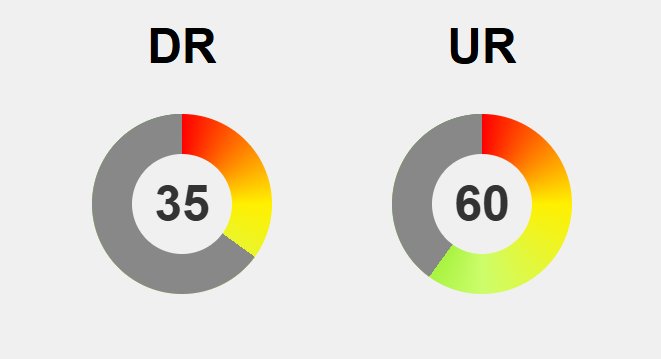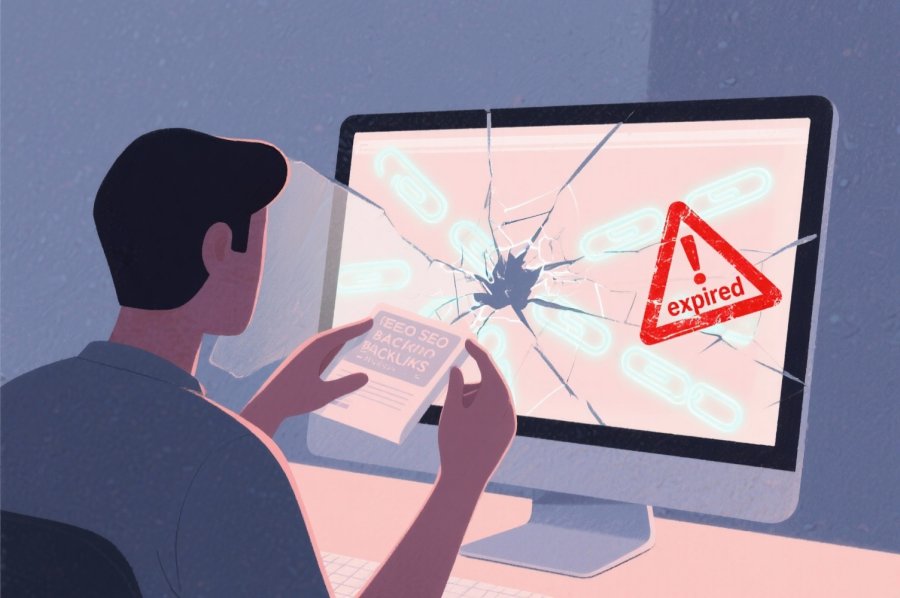Unravel the sinister journey of Adolf Hitler, a man whose rise from failed artist and disillusioned soldier to dictator unleashed one of history’s most devastating genocides. How did a childhood marked by strict discipline and personal failure transform into a force fueled by hate, propaganda, and manipulation? As Hitler exploited societal turmoil, economic despair, and national humiliation, he crafted a ruthless regime built on racial hatred, territorial conquest, and systematic murder. This gripping account reveals how charisma and propaganda can turn societal vulnerabilities into catastrophic violence, culminating in the Holocaust and World War II. Yet, his story also serves as a stark warning: how unchecked power, extremist ideology, and societal complacency can lead to unimaginable destruction. What lessons can we learn from such darkness? Understanding Hitler’s rise is vital—not just as history, but as a guide to recognize and resist the forces that threaten human dignity and democracy today.
From Obscurity to Power: Hitler’s Catastrophic Rise and Impact
Adolf Hitler’s journey from obscurity to the pinnacle of absolute power is one of the most disturbing stories in modern history. His rise was driven by personal failures, radical beliefs, and a talent for manipulating public emotions. Born in 1889 in Braunau am Inn, Austria, Hitler faced a childhood marked by strict discipline from his father and a close bond with his caring mother. His early dreams of becoming an artist were crushed after repeated rejections from art schools, leaving him feeling defeated and aimless.
Moving to Vienna as a young man, Hitler was exposed to nationalist and anti-Semitic ideas circulating in the city’s tense ethnic landscape. These influences deeply shaped his worldview, planting the seeds of hatred and racial superiority that would later define his ideology. His years in Vienna were marked by poverty and personal frustration, but also by the radicalization of his beliefs, which he would later exploit for political gain.
When World War I erupted, Hitler saw an opportunity to prove his loyalty to Germany. Enlisting in the Bavarian Reserve Infantry, he served bravely on the Western Front, earning medals for bravery despite witnessing the horrors of trench warfare. The humiliating Treaty of Versailles in 1919, which blamed Germany for the war and imposed harsh reparations, became a rallying cry for his nationalist rage. This sense of betrayal fueled his desire for a strong leader who could restore Germany’s dignity.
By 1919, Hitler had joined the Nazi Party, quickly establishing himself as a charismatic and fiery orator. His first attempt to seize power in 1923, the Beer Hall Putsch, failed disastrously, landing him in prison. During his time behind bars, he wrote Mein Kampf, outlining his vision of racial purity, territorial expansion, and the superiority of the “Aryan” race. These ideas resonated with a German population suffering economic hardship, social unrest, and national shame.
After his release, Hitler focused on rebuilding the Nazi Party, using propaganda, mass rallies, and a stirring nationalist message to rally support. The economic despair of the Great Depression further amplified his appeal, as many Germans sought a decisive leader to restore their lost pride. By 1933, he had become Chancellor, and his swift consolidation of power marked the start of a brutal, totalitarian regime.
Once in control, Hitler moved rapidly to dismantle democracy and establish a regime rooted in racial hatred and expansionism. The Reichstag Fire of 1933 allowed him to suspend civil liberties and eliminate political opposition. Laws like the Nuremberg Laws institutionalized discrimination against Jews and minorities, laying the groundwork for genocide. His aggressive military campaigns ignited World War II and ultimately led to the Holocaust’s unimaginable atrocities.
Hitler’s rise from failed artist to dictator demonstrates how charisma, propaganda, and societal vulnerability can lead to catastrophic consequences. His story serves as a stark warning of the dangers posed by unchecked power fueled by hatred and manipulation. Recognizing this dark chapter helps us understand the importance of vigilance, education, and defending democratic values to prevent history from repeating itself.
Roots of Hatred: How Hitler’s Childhood and Ideology Fueled His Atrocities
Adolf Hitler’s early life played a crucial role in shaping the beliefs and actions he would later pursue as a leader. Born in 1889 in Braunau am Inn, Austria, he was the fourth of six children, but only his younger sister Paula survived into adulthood. His father, Alois, was strict and authoritarian, often clashing with young Adolf, which created a tense environment at home. His mother, Klara, was gentle and caring, forming a close bond with him that contrasted sharply with his father’s stern discipline. These family dynamics influenced Hitler’s perception of authority and obedience from an early age.
As a teenager, Hitler dreamed of becoming an artist. He moved to Vienna with hopes of attending art school, only to be rejected twice by the Academy of Fine Arts. This rejection deeply affected him, planting seeds of frustration and a sense of failure that would linger for years. During his time in Vienna, he was exposed to nationalist and anti-Semitic ideas circulating in a city rife with ethnic tension. These ideas resonated with his own prejudiced beliefs, and the city’s racist rhetoric helped radicalize his worldview.
Vienna’s atmosphere of ethnic division and bigotry left a lasting impression on Hitler. Surrounded by propaganda that dehumanized Jews and other minorities, he began to develop a conviction in racial superiority and the need for racial purification. His personal failures and economic struggles during this period only heightened his feelings of alienation and resentment, fueling a worldview rooted in hate. These years marked the beginning of his ideological radicalization, laying the groundwork for his later political ambitions.
When World War I broke out, Hitler saw an opportunity to prove his loyalty to Germany. Enlisting in the Bavarian Reserve Infantry, he served bravely on the Western Front, earning medals for bravery despite witnessing the horrors of trench warfare. The humiliating Treaty of Versailles in 1919, which blamed Germany for the war and imposed severe reparations, became a rallying point for his nationalist rage. He believed Germany needed a strong leader to restore its dignity, and he saw himself as that leader.
Joining the Nazi Party in 1919, Hitler quickly recognized the power of propaganda and the importance of charismatic oratory. His first attempt to seize power in 1923, the Beer Hall Putsch, failed spectacularly, landing him in prison. During his incarceration, he wrote Mein Kampf, outlining his vision of racial purity, territorial expansion, and Aryan supremacy. These ideas resonated with a German population suffering economic hardship and social unrest, making him a compelling figure for those desperate for change.
After his release, Hitler focused on rebuilding the Nazi Party, using rallies, propaganda, and a nationalist message to rally support. The economic devastation of the Great Depression further amplified his appeal, as many Germans sought a decisive leader capable of restoring national pride. By 1933, he had become Chancellor, swiftly consolidating power and turning Germany into a brutal totalitarian state driven by racial hatred and expansionism.
Hitler’s early life reveals how personal failures, radical influences, and societal upheaval can shape a destructive ideology. His journey from a rejected artist to a dictator demonstrates how vulnerability and resentment can be exploited by those with dangerous ambitions. Understanding these roots underscores the importance of vigilance against similar forces today, reminding us how easily hatred can be cultivated and manipulated into catastrophic actions.
Methods of Evil: Unveiling Hitler’s Strategies for Genocide and Expansion
Hitler’s methods for enforcing his racial and territorial ambitions were ruthlessly calculated and brutally efficient. Propaganda became a central weapon, used to dehumanize entire groups and craft a narrative that portrayed Jews, Romani people, disabled individuals, and others as threats to the German nation. This relentless messaging normalized hate and made societal acceptance of violence easier, with laws like the Nuremberg Laws of 1935 institutionalizing discrimination and stripping Jews of citizenship and rights. These legal measures were backed by a constant stream of propaganda campaigns that reinforced racial hierarchies and fostered collective hatred.
Once in power, Hitler moved swiftly to expand his influence through military conquest and terror. The annexation of Austria in 1938, followed by the invasion of Czechoslovakia and Poland, weren’t spontaneous acts but carefully planned moves driven by the desire for Lebensraum—living space. State-controlled media rallied public support for these aggressive campaigns, framing them as necessary steps to restore Germany’s greatness. Violence and terror were woven into every military operation, with the SS, Gestapo, and Einsatzgruppen carrying out mass arrests, executions, and atrocities under the guise of maintaining order and racial purity.
Hitler’s regime also targeted political opposition with calculated brutality. The Reichstag Fire of 1933 provided a convenient pretext to suspend civil liberties and imprison opponents, especially communists. The regime’s violence was strategic, aimed at crushing dissent and establishing a climate of fear. Every institution, from the legal system to education and media, was mobilized to serve the Nazi agenda, ensuring obedience through intimidation and propaganda. This environment of terror made resistance dangerous and often futile, consolidating Hitler’s totalitarian control.
At the core of Hitler’s policies was a deeply racist ideology that sought to eliminate anyone deemed undesirable. The systematic marginalization and persecution of Jews, Romani, disabled individuals, and others culminated in the Holocaust—an industrialized genocide that resulted in the murder of six million Jews and millions of others. Ghettos confined Jewish populations; extermination camps like Auschwitz became factories of death, where mass shootings and gas chambers executed the regime’s racial extermination plans with chilling efficiency. This machinery of genocide was driven by a brutal ideology that dehumanized its victims.
Propaganda played a crucial role beyond inciting hatred; it erased moral boundaries and reinforced obedience. Nazi media, education, and rallies fostered a collective mentality that celebrated cruelty and justified atrocities. Symbols like the swastika and slogans such as “Germany for Germans” cultivated an us-versus-them mentality that made violence seem acceptable. Control over information silenced dissent and distorted truth, enabling the regime to carry out its horrors with societal support or indifference. Hitler’s mastery of manipulation turned cruelty into a tool for mass extermination, illustrating how hate and propaganda can destroy the fabric of humanity itself.
Understanding the extensive methods used by Hitler and the Nazi regime is crucial for recognizing the mechanisms of such atrocities. For a more detailed analysis of how propaganda shaped Nazi policies and public perception, you can explore this comprehensive resource on Nazi propaganda and its role in enabling genocide.
Lessons from Darkness: How Recognizing the Past Can Prevent Future Tragedies
Understanding the atrocities committed under Hitler’s regime offers vital lessons for preventing future totalitarian and genocidal tragedies. Examining how propaganda, societal fear, and the erosion of democratic norms enabled such horrors reveals the importance of early detection and action. Recognizing warning signs—such as rising extremist rhetoric, restrictions on civil liberties, and the dehumanization of minorities—can help societies intervene before violence spirals out of control.
Education plays a crucial role in building resilience against hate and manipulation. When communities are informed about the tactics used to spread prejudice and how authoritarian regimes exploit fear, they become better equipped to resist those strategies. Teaching about the Holocaust and Nazi methods fosters empathy and critical thinking, making it harder for dangerous narratives to take hold and flourish.
The rise of propaganda during Hitler’s era demonstrates how words and symbols wield immense power to shape collective consciousness. Today, misinformation and social media can spread hateful ideologies just as easily. Promoting media literacy and encouraging skepticism of false narratives are essential to counteract manipulation. When people understand how hate is manufactured and amplified, they are less susceptible to falling for harmful messages.
Protecting democratic institutions remains a key safeguard against tyranny. The Nazi regime’s success depended on gradually weakening legal and political frameworks. Vigilant defense of civil liberties, transparency, and active civic engagement help prevent authoritarian forces from gaining ground. Small actions—questioning authority, speaking out against injustice, and defending minority rights—contribute to a collective resistance that can stop extremism from taking hold.
Memorials, survivor testimonies, and ongoing remembrance serve as reminders of the past’s darkest chapters. These efforts reinforce the importance of tolerance and human rights, inspiring future generations to remain alert and committed. They remind us that democracy and human dignity require constant nurturing and vigilance to withstand the threats of hate and authoritarianism.
In today’s digital age, new challenges emerge. Online platforms can rapidly spread misinformation and extremist content, making it easier for dangerous ideas to gain traction. Building a culture of media literacy, critical engagement, and open dialogue online is vital. Recognizing the manufactured nature of hatred helps prevent its contagious spread and reduces societal vulnerability to manipulation.
The lessons from Hitler’s rise make one thing clear: a vigilant, informed society is the best defense against the return of hatred and tyranny. Protecting democratic norms, educating communities, and staying alert to warning signs are ongoing responsibilities. By learning from history’s darkest moments, we can work to ensure that such horrors are never repeated, forging a future rooted in tolerance, truth, and human rights.
Guardians of Democracy: The Ongoing Fight Against Hate and Totalitarianism
The rise of Hitler and the atrocities of his regime serve as a stark reminder of how fragile democracy and human rights can be when vigilance lapses. His story underscores the danger of unchecked hatred, propaganda, and the gradual erosion of civil liberties. Recognizing early warning signs—such as rising extremist rhetoric, societal fear, and the dehumanization of minorities—is crucial to preventing history from repeating itself. Complacency in the face of growing intolerance only emboldens those who seek to undermine democratic values.
Education remains our strongest tool for resilience. When communities understand how hate is manufactured and manipulated, they become less susceptible to propaganda’s influence. Teaching about the Holocaust and the tactics used to spread prejudice helps foster empathy, critical thinking, and moral awareness. These lessons empower individuals to challenge dangerous narratives before they escalate into violence or oppression.
The power of language and symbols to shape collective consciousness was evident in Hitler’s era. Today, misinformation and social media can spread hate just as rapidly. Promoting media literacy and encouraging skepticism of false or inflammatory content are vital steps to counteract manipulation. When people understand how hate is manufactured and amplified online, they are less likely to accept or participate in it.
Safeguarding democratic institutions is essential. The Nazi regime’s success depended on the gradual weakening of legal and political safeguards. Vigilant protection of civil liberties, transparency, and active civic engagement act as bulwarks against authoritarian tendencies. Small actions—questioning authority, defending minority rights, speaking out against injustice—add up to a collective resistance capable of halting the rise of extremism.
Remembrance and education about the past are more than acts of memory—they are acts of prevention. Memorials, survivor stories, and ongoing dialogue reinforce the importance of tolerance and human dignity. They remind us that democracy and human rights are not self-sustaining; they require continuous effort and awareness to endure.
In our digital age, new challenges emerge. Extremist content can spread rapidly across social platforms, making it easier for dangerous ideas to gain traction. Building a culture of media literacy, online critical engagement, and open discussion helps prevent the manipulation of perceptions. Recognizing the manufactured nature of hatred online is key to reducing its societal impact.
The lessons from Hitler’s rise highlight that the preservation of freedom depends on active participation. Vigilance, education, and defending democratic norms are ongoing responsibilities. The roots of hatred and authoritarianism can be deeply buried, but with sustained effort, we can prevent them from taking hold again.
Looking ahead, our best defense lies in staying informed and committed to human rights. By learning from history’s darkest chapters, we can foster a future based on tolerance, truth, and justice. The fight against hatred is continuous, and each of us bears the responsibility to remain watchful, to stand against tyranny, and to ensure that such horrors are never repeated.






